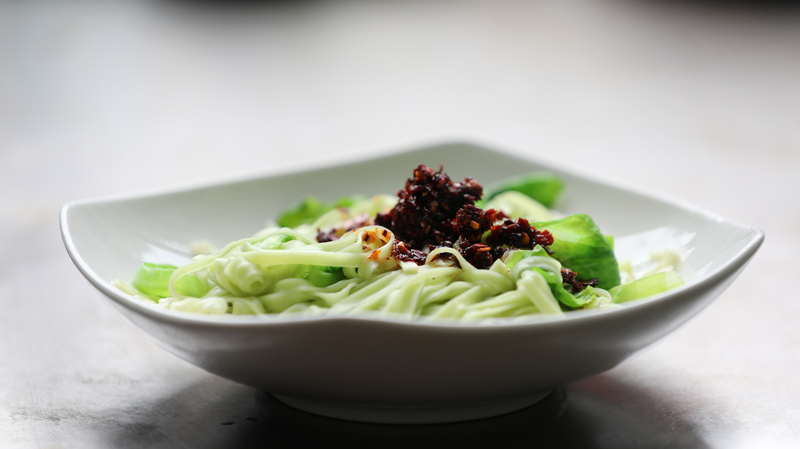In the heart of the southwestern Chinese mainland province of Guizhou, Hejiaba Village is tapping into a "green gold mine" beneath its lotus ponds: lotus-leaf noodles. Over 200 mu (13-hectare) of lush leaves fuel a culinary trend that's boosting local incomes and drawing food enthusiasts worldwide.
At daybreak, Wu Yanlin and neighbours wade into the sea of green, selecting leaves with the deepest pigment. "The key lies in choosing darker leaves," Wu explains. "Younger leaves yield juice that's too pale." After a thorough wash, the leaves are juiced, measured, and mixed with flour, then repeatedly rolled, flattened, and cut into delicate strips to air-dry under the sun.
Once cooked, the noodles emerge with a glossy, natural green sheen and a gentle, refreshing aroma. "These noodles are a summer staple," says resident Zhao Qifeng. "They're delightfully slippery, chewy, and carry a faint, soothing fragrance." For many in Hejiaba, a bowl at dawn has become a local ritual.
Beyond flavour, lotus-leaf noodles are reshaping the village's economic landscape. By adding value to a traditional crop, residents report rising household incomes and a renewed sense of pride in local heritage. The trend is also catching the eye of travellers and digital nomads seeking authentic, sustainable food experiences off the beaten path.
As global consumers embrace plant-based innovation and experiential travel, Hejiaba's lotus-leaf noodles offer a taste of rural revival in action. In a world hungry for authenticity and sustainability, this vibrant dish proves that small-scale ingenuity can have far-reaching impact.
Reference(s):
cgtn.com




